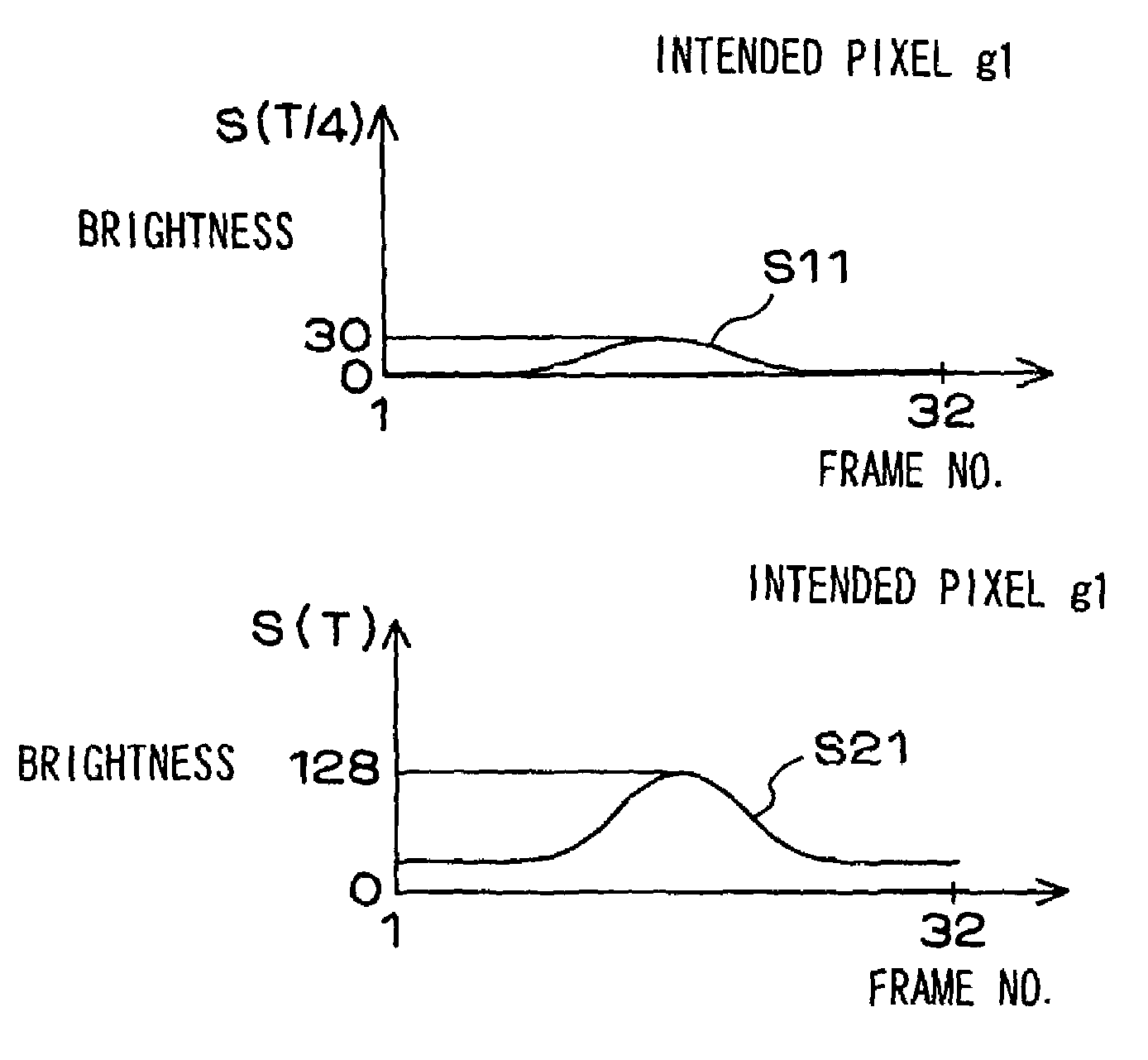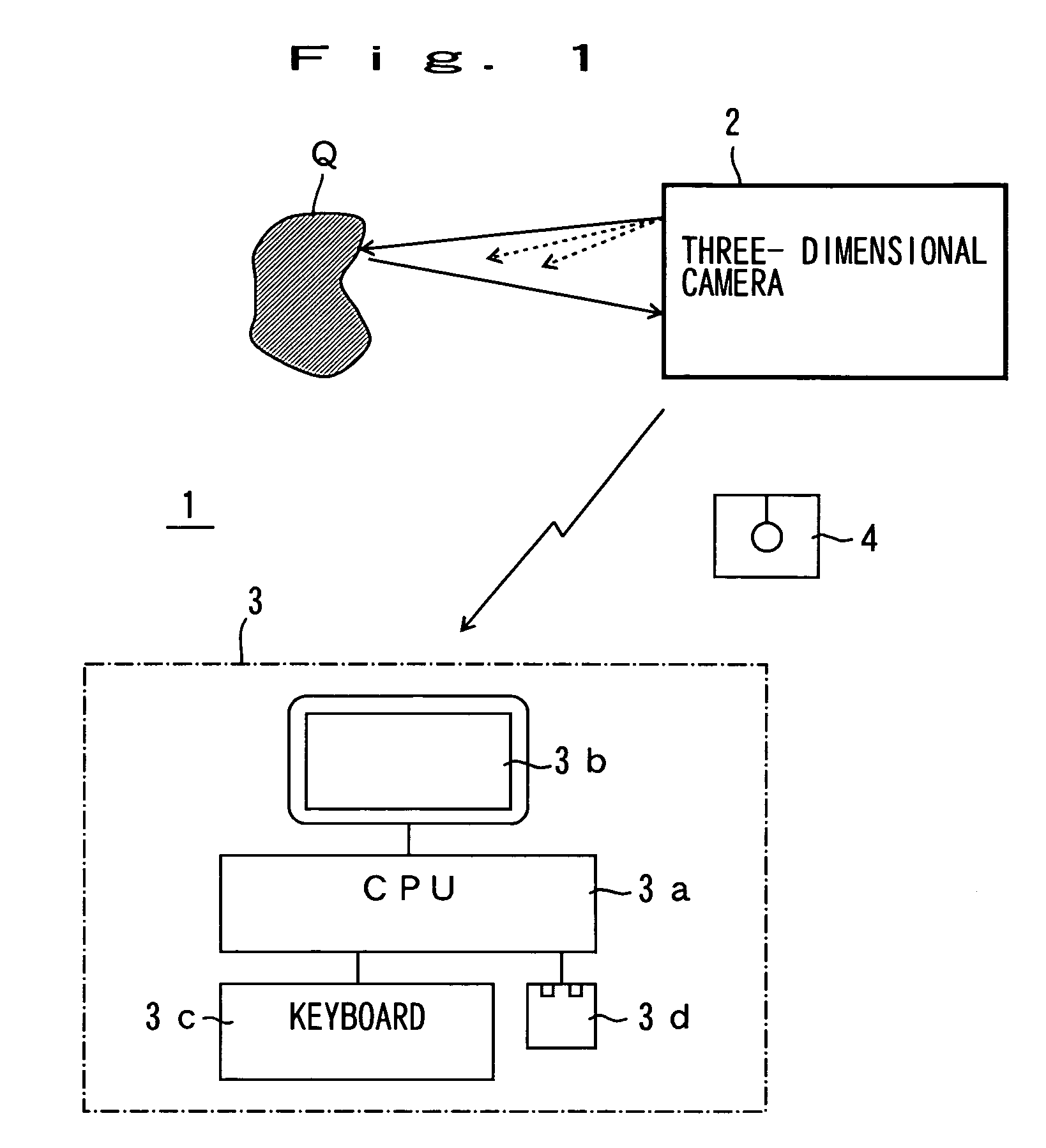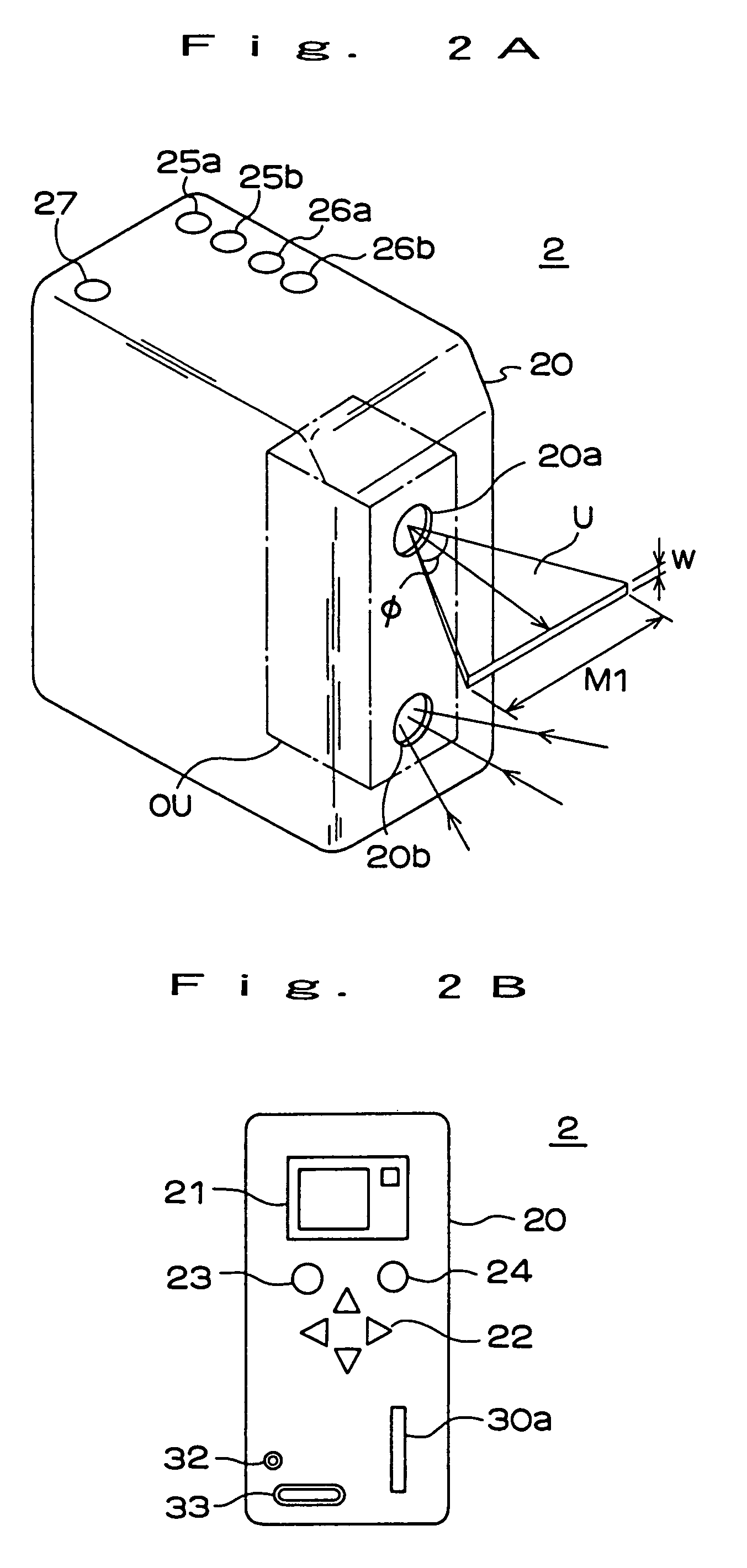Three-dimensional input apparatus and image sensing control method
- Summary
- Abstract
- Description
- Claims
- Application Information
AI Technical Summary
Benefits of technology
Problems solved by technology
Method used
Image
Examples
first embodiment
[0078]FIG. 1 is a diagram showing a configuration of a measuring system 1 according to this invention.
[0079]The measuring system 1 comprises a three-dimensional camera 2 for conducting three-dimensional measurement by the slit light projection method, and a host 3 for processing output data of the three-dimensional camera 2.
[0080]The three-dimensional camera 2 outputs a two-dimensional image indicating color information of an object Q and the data required for calibration as well as the measurement data specifying the three-dimensional position of a plurality of sampling points on the object Q. The calculation processing for determining the coordinates of the sampling points using triangulation are performed by the host 3.
[0081]The host 3 is a computer system including a CPU 3a, a display 3b, a keyboard 3c and a mouse 3d. The CPU 3a has built therein software for processing the measurement data.
[0082]Data can be transmitted and received between the host 3 and the three-dimensional c...
second embodiment
[0183]The basic configuration of the second embodiment is the same as that of the first embodiment. Specifically, FIGS. 1 to 5B, 7A to 10 and 17 to 19 and the description thereof applicable to the first embodiment are also applicable to the second embodiment. Only the portions of the second embodiment different from the first embodiment will be explained below.
[0184]The first embodiment refers to both the normal mode and the high-speed mode of the method of reading the frame by the image sensor 53. In the second embodiment, on the other, only the normal mode will be described.
[0185]FIG. 20 is a diagram showing the read range of the image sensor, and corresponds to FIG. 6 of the first embodiment. As shown in FIG. 20, in the normal mode, the thinned-out read operation is not performed unlike in the first embodiment, but all the data in the effective light-receiving area Ae are read out. Specifically, the skip read amount is set to zero in the skip read register 535 of FIG. 12, thereby...
third embodiment
[0231]The basic configuration according to the third embodiment is the same as that of the first and second embodiments. Specifically, FIGS. 1 to 5B, FIGS. 7A to 10 and FIGS. 17 to 19 for the first embodiment and FIG. 20 for the second embodiment and the description thereof are applicable also to the third embodiment. In the description that follows, therefore, the portions not included in the first and second embodiments will be explained.
[0232]In the third embodiment, the image sensing information from the image sensor 53 is stored in a memory 63 through a select circuit 75 in synchronism with the clock from a driver 55. The image sensor 53 is controlled by a control signal in such a manner that the light-receiving data are read destructively. As a result, the light-receiving data S (T / n) having the charge accumulation time T / n and the light-receiving data S (T) having the charge accumulation time T, that is, n times larger than T / n are produced. An explanation will be given of a ...
PUM
 Login to View More
Login to View More Abstract
Description
Claims
Application Information
 Login to View More
Login to View More - Generate Ideas
- Intellectual Property
- Life Sciences
- Materials
- Tech Scout
- Unparalleled Data Quality
- Higher Quality Content
- 60% Fewer Hallucinations
Browse by: Latest US Patents, China's latest patents, Technical Efficacy Thesaurus, Application Domain, Technology Topic, Popular Technical Reports.
© 2025 PatSnap. All rights reserved.Legal|Privacy policy|Modern Slavery Act Transparency Statement|Sitemap|About US| Contact US: help@patsnap.com



